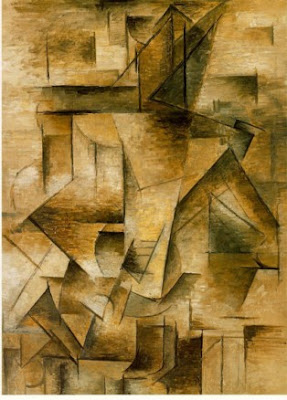

They brought different views of subjects (usually objects or figures) together in the same picture, resulting in paintings that appear fragmented and abstracted.Ĭubism was one of the most influential styles of the twentieth century. They also used multiple or contrasting vantage points.Ĭubism was a revolutionary new approach to representing reality invented in around 1907–08 by artists Pablo Picasso and Georges Braque. So they reduced and fractured objects into geometric forms, and then realigned these within a shallow, relieflike space. They wanted instead to emphasize the two-dimensionality of the canvas. The Cubist painters rejected the inherited concept that art should copy nature, or that they should adopt the traditional techniques of perspective, modeling, and foreshortening. Picasso had first seen African art when, in May or June 1907, he visited the ethnographic museum in the Palais du Trocadéro in Paris. The stylization and distortion of Picasso's ground-breaking Les Demoiselles d'Avignon (Museum of Modern Art, New York), painted in 1907, came from African art. Vauxcelles called the geometric forms in the highly abstracted works "cubes." Other influences on early Cubism have been linked to Primitivism and non-Western sources. The French art critic Louis Vauxcelles coined the term Cubism after seeing the landscapes Braque had painted in 1908 at L'Estaque in emulation of Cézanne. It was created by Pablo Picasso (Spanish, 1881–1973) and Georges Braque (French, 1882–1963) in Paris between 19. It has been argued that cubism was the most important and influential innovation in the early history of modern art as it gave artists the freedom to deal with reality in any way they chose.Ĭubism was one of the most influential visual art styles of the early twentieth century. Late cubism saw Braque and Picasso developing in different directions, Braque adopted a looser, richer more colourful approach while Picasso continued in a semi-abstract style before moving away from cubism altogether after 1921. Synthetic cubism appears flatter than analytical cubism. These pictures tend to be brighter, lighter and more decorative and have been referred to as rococo cubism. Unlike analytical cubism, which fragmented, in synthetic cubism the image is built up from pre-existing elements of different colour, shape and texture. Synthetic cubism involved the reintroduction of oil paint into cubist collage. High cubism saw the fragmentation becoming more and more abstract and, to counteract this, Braque and Picasso either drew in specific identifiable details or added words to identify facets of the composition or added imitation wood grain to indicate wooden surfaces.Ĭubist collage initially incorporated ready-made elements into the traditional oil paint on canvas medium (such as chair-caning) and developed into virtually paint-free collage and drawing compositions. In this kind of Cubist painting the artist appears to imagine the object as having a geometric, faceted form that can be recombined into a composition. The cubists saw this as a means of analytically fragmenting ( deconstructing) objects so that they could be used as building blocks of the composition. Further, cubism, like all modernist art, took another step towards abandoning illusionism without becoming completely abstract.Ĭubism is seen as having several phases analytical cubism, high cubism, cubist collage, synthetic cubism, and late cubism.Īnalytical cubism builds on Cezanne’s late work in which he painted solid form without traditional modelling and perspective through the juxtaposition of planes of colour. Cubism, Gris argued, represented a new realism that abandoned this rule in its representation of a three-dimensional reality on a two-dimensional surface.


Renaissance naturalism supposed a single, fixed viewpoint. The name cubism derived from comments of critics to the early cubist paintings, in which figures and houses were reduced to geometric outlines, as composed of ‘petits cubes’ or ‘bizarreries cubiques’. The work of these four was the centre of a cubist movement centred on Paris prior to the First World War.


 0 kommentar(er)
0 kommentar(er)
